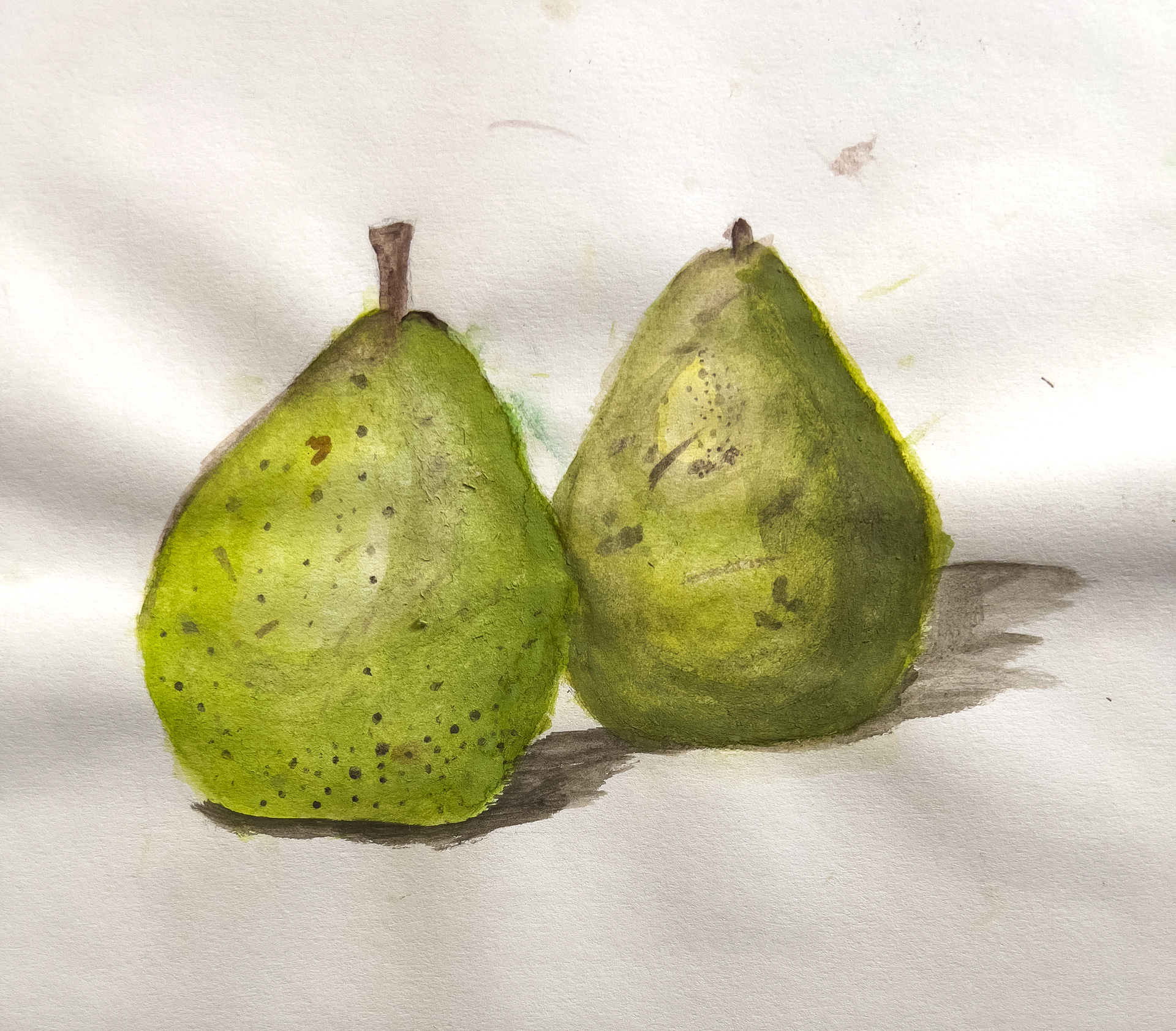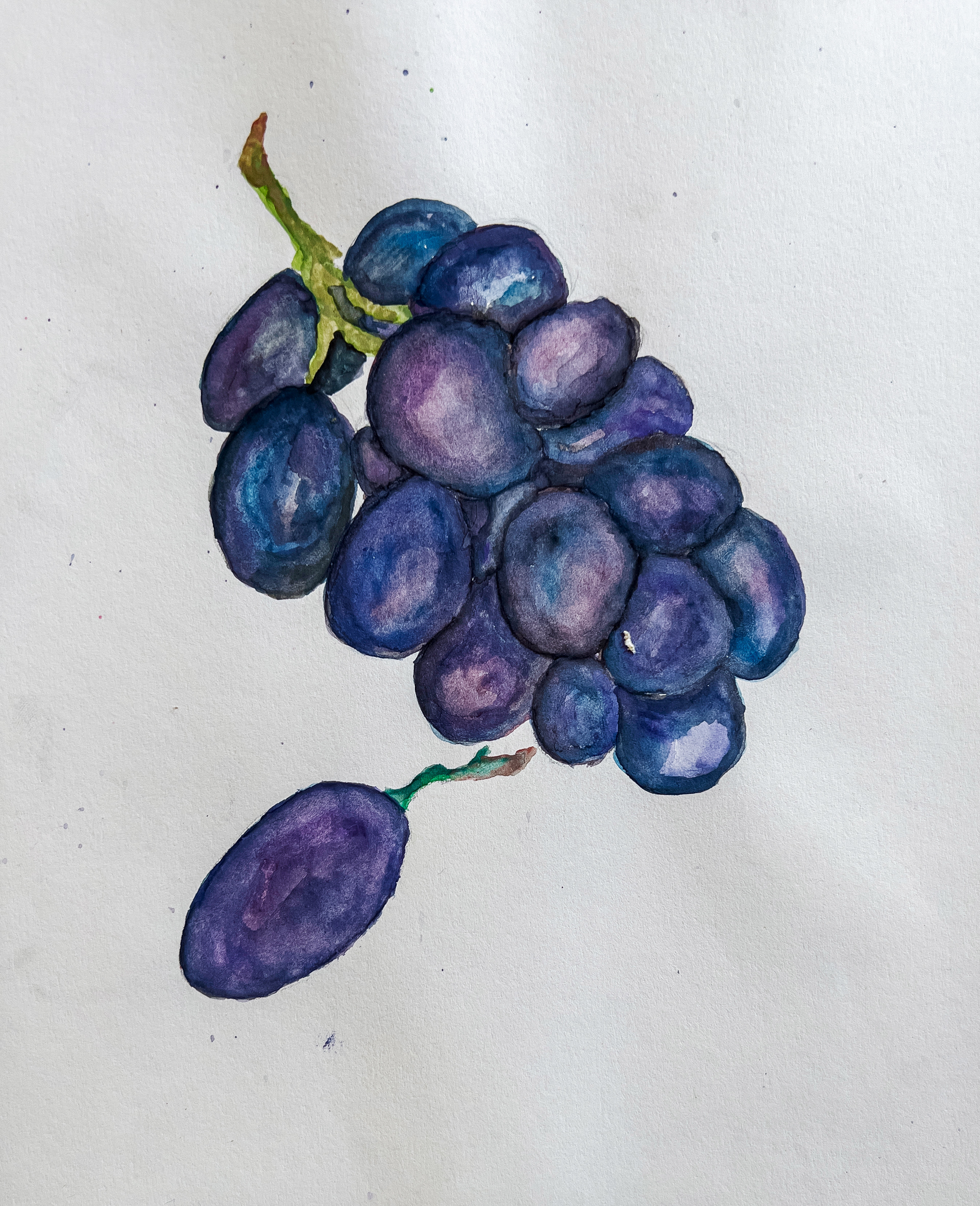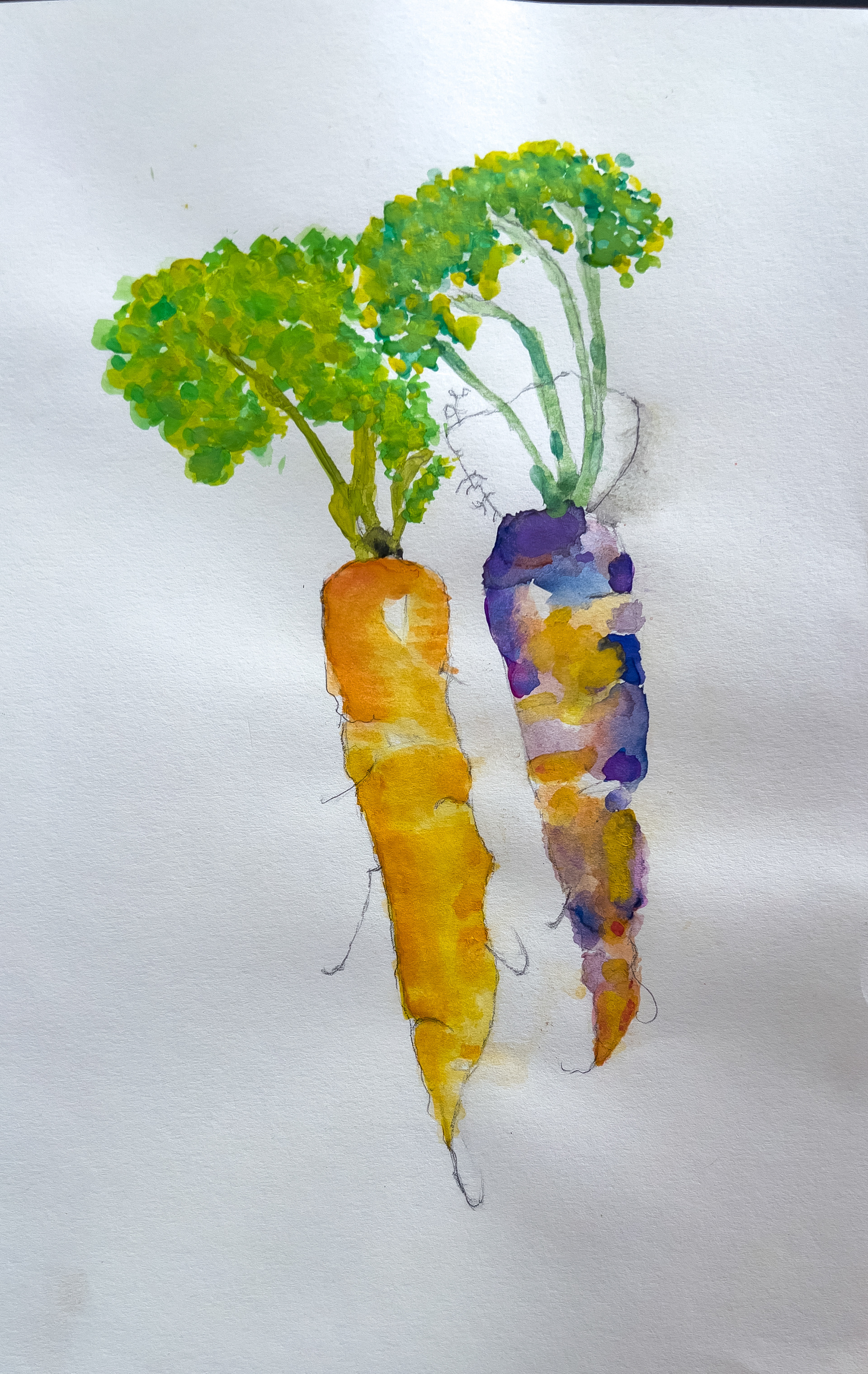Learning Objectives:
• Experiment with a range of painting techniques
• Creatively develop new and experimental techniques
• Develop better control of paint techniques and brush handling
• Creatively develop new and experimental techniques
• Develop better control of paint techniques and brush handling
What you will need:
Cartridge paper (or your sketchbook), a soft pencil (preferably 2B or 4B), ruler, eraser, pencil sharpener, watercolours, a small brush, a pot of water and a paper towel.
Your Task:
1. Watch the video below
2. Find a piece of fruit from your kitchen, or download a photo from the Internet if you don't have any
3. Lightly sketch the outlines of your fruit in pencil
4. Add colour to your fruit using watercolours. Try to use some of the techniques you experimented with last lesson. Start with the lightest background colours and layer up darker colours and details on top.
5. Neaten, refine and add detail to your work before you finish.
2. Find a piece of fruit from your kitchen, or download a photo from the Internet if you don't have any
3. Lightly sketch the outlines of your fruit in pencil
4. Add colour to your fruit using watercolours. Try to use some of the techniques you experimented with last lesson. Start with the lightest background colours and layer up darker colours and details on top.
5. Neaten, refine and add detail to your work before you finish.
Demo Video:
Mr Lax's examples:
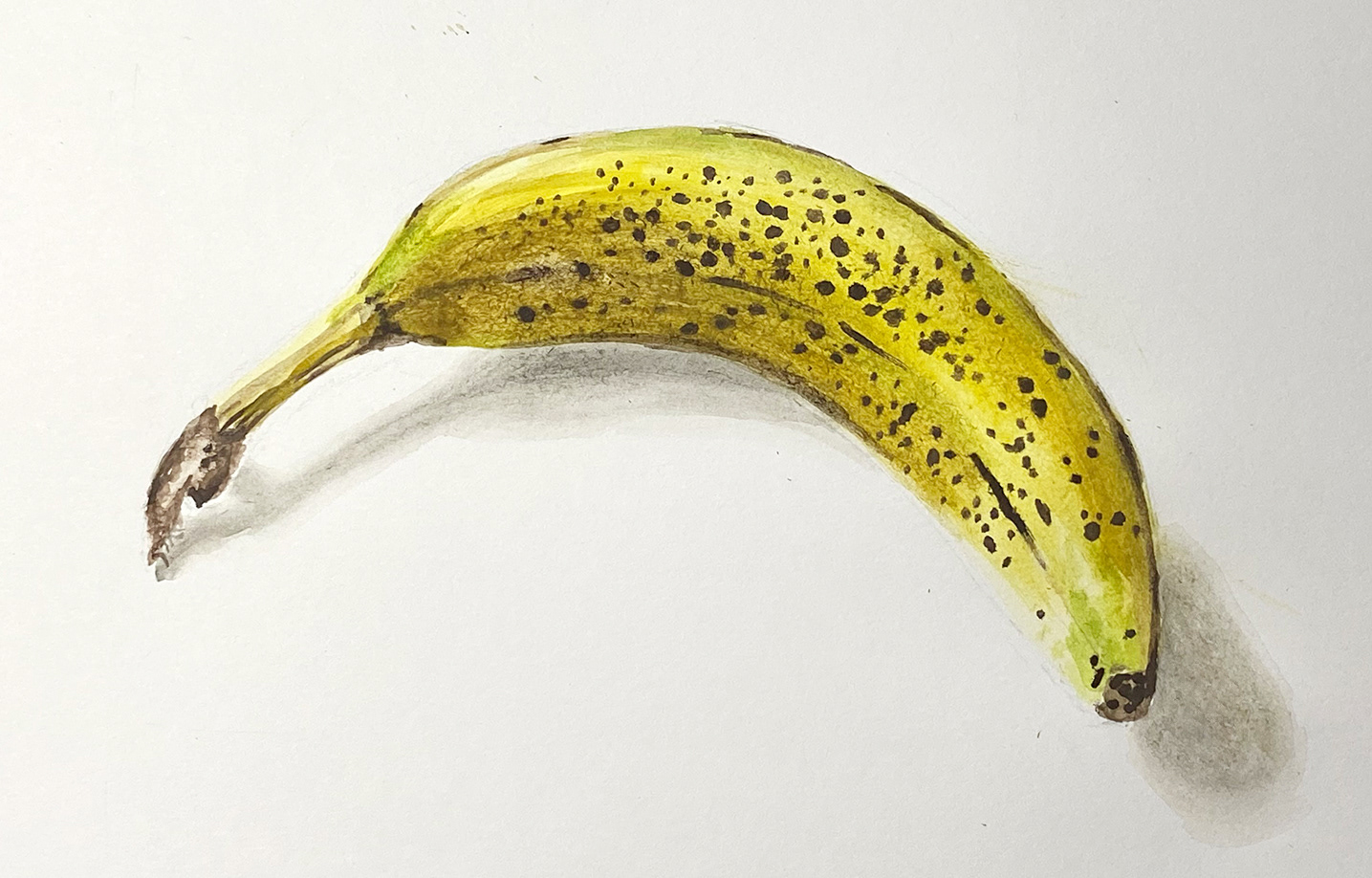
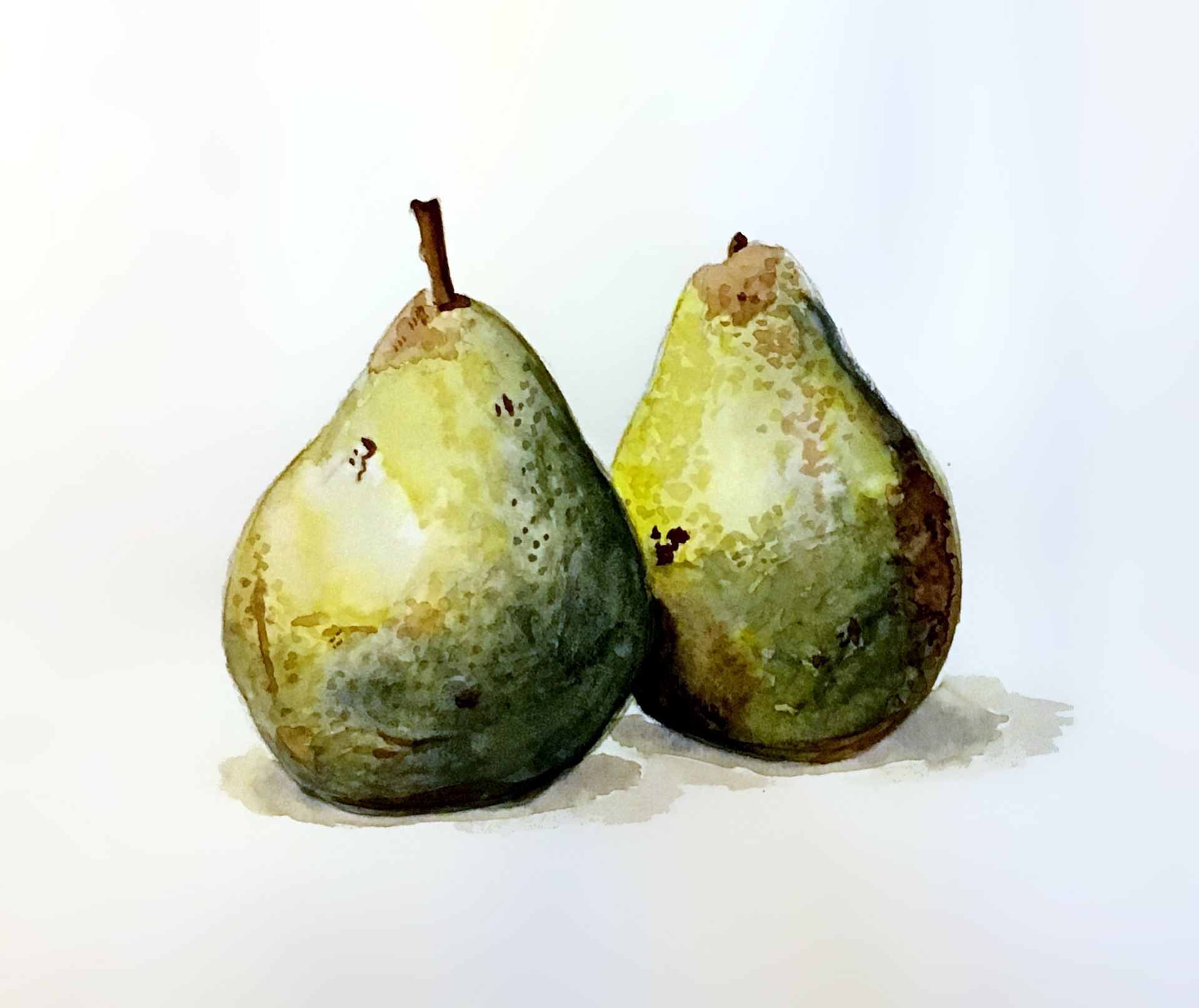
Top Tips
• Be careful not to apply too much water to your brush
• Experiment with different consistencies of paint by mixing in different quantities of water
• Try scraping wet paint off the page with the 'wrong' end of your brush
• Try layering your colours. If the paint is still wet the colours will blend, but if the first layer has dried it won't
• Try different colour combinations
• Don't scrub at the surface of the page, as it can cause it to rip (you will see small bits appear gradually)
• Experiment with different consistencies of paint by mixing in different quantities of water
• Try scraping wet paint off the page with the 'wrong' end of your brush
• Try layering your colours. If the paint is still wet the colours will blend, but if the first layer has dried it won't
• Try different colour combinations
• Don't scrub at the surface of the page, as it can cause it to rip (you will see small bits appear gradually)
Examples of previous students' paintings:
What do you think has gone well and what could have been improved?
